Mark Amery – 16 June, 2010
This is the Claytons Prospect: the Prospect you're having when you're not having Prospect (apparently delayed till next year). A chance to do a contemporary survey without the expectation that it will somehow, in a snapshot, cover the full gamut of contemporary art. Instead it gives an artist full attention and space in conversation with their peers. Rather than a presentation of already much feted greatest hits, through the commission of new work and strong juxtapositions this art feels very much of the moment.
Wellington
Ready To Roll
Curated by Heather Galbraith
29 May -12 September 2010
I was starting to give up on big city public galleries as spaces for new contemporary art. Beyond increasingly being taken over by large solo surveys, round-ups like Prospect have felt jumbled to no good effect, and in the case of ridiculously large biennales and triennales (with their equally ridiculously long titles) the work often comes overloaded with curatorial baggage. Meanwhile, artist projects in these big white containers have often looked uncomfortable in their corners, leaving me nostalgic for their origin in smaller, more humane spaces.
I came away from Ready to Roll then immensely relieved. Presenting commissioned and recent work by eight key New Zealand up-and-comers there’s a feast of good work in this, senior curator Heather Galbraith’s last show before she shifts to Te Papa. So much good work, I can barely do justice to half of it in one visit and one review.
Ready to Roll just gets up and on with the job many people have been calling for from City Gallery. That is: a checking of the contemporary pulse by giving a clutch of artists who’ve had limited exposure in Wellington the wider public attention they deserve. Galbraith’s selection is strong (albeit like shooting fish in a barrel when these shows are so rare), and their presentation has been given great thought.
This is the Claytons Prospect: the Prospect you’re having when you’re not having Prospect (apparently delayed till next year). A chance to do a contemporary survey without the expectation that it will somehow, in a snapshot, cover the full gamut of contemporary art. Instead it gives an artist full attention and space in conversation with their peers. Rather than a presentation of already much feted greatest hits, through the commission of new work and strong juxtapositions this art feels very much of the moment. In this regard Galbraith’s exhibition title is a little twee and nostalgic (referencing the old TVNZ top ten countdown pop show). These artists aren’t ready to roll, they’re already on a roll.
There are strong themes running through, to be sure, but refreshingly the gallery doesn’t feel the need to pre-package the work with them. For me most strongly was the sense of artists feeling out their size in the world. Physically, often quite privately, responding with their actions and thoughts to the world’s immensity, which the gallery’s large chambers provide a model for.
I’ve liked a lot of Elliot Collins’ text paintings before, but they’ve always been a bit scattergun in their success for me, and I’ve never been convinced by their pedestrian format or restriction to small canvases. With the commercial billboard size of his wall painting here (the largest I can recall at CGW) Collins plays beautifully with the tensions of scale and, in this digitally socially networked world, our personal thoughts across public physical time and space. Like so much great art this is the small ‘I’ dealing with its presence in the big widescreen world.
There’s a far more complex play with textual layers and modes of address wrapped into one piece than I’ve got from previous Collins works. It begins with an overly grand yet personal and trivial locator statement, The last half hour of the twentieth century. This pays homage to the past whilst also bringing it down to personal diaristic size. Six numbered text fragments follow. The first, again with a composite of tones, wraps up a century’s art: It is here I give thanks for stories and coffee and dreamtime and aeroplane rides. The text can also be tender and wistful, providing meditations on distance - reaching and opening out into space like a rock song lyric: And someone shouts up into the sky from the street below.
Collins’ text lives in the cryptic spaces between personal anecdote, literary flourish, art historical quotation and public address, diminishing in size as it runs down the wall, like movie credits or concentric circles left from a stone dropped in a pool. Underneath the text swatches of paint swarm up as a school of fish, like a letting go of modernism and all that is behind us, sent off into the ether by the force of the spinning of the globe.
This is placed very nicely opposite a bank of five small monitors containing a survey of forty filmed actions conducted between 2004 and 2010 by Campbell Patterson. Echoing Collins’ gaze, Patterson’s performances claim the awkward domestic spaces between things. They comment beautifully on the mundanity and magic of our activity between the so-called events in our lives. He squeezes into gaps in buildings, gets trapped by furniture and transcends the usual domestic routines by inventing new meaningless ones. Clownlike, they are often very funny, unsettling and, aesthetically, strangely satisfying (squishing bananas in his socks, filling a toilet bowl with toilet paper and setting fire to it).
Running five series of these, seemingly randomly together is ingenious. It’s a great example of this exhibition’s success in letting artists’ work speak for itself rather than make it jump through all sorts of imposed frames. With Patterson you start to appreciate how as performance-sculpture there is strong exploration of the weight and movement of form. Other viewers seemed to share my difficulty in moving on for fear of missing his next ludicrous installment.
Patterson’s actions are full of the prickly sensual power of physical interaction with the world around you, and the latent emotional charge embedded in our ordinary domestic routines (he’s often to be found in a towel or in his underwear). He approaches these with the dedication of an Olympic athlete.
In all of these respects there are links to the work of Kushana Bush and Richard Maloy in Ready to Roll. The first I encounter of Maloy is a video of an older work that reminded me of Richard Dreyfuss’s possessed sculpting at the family dinner table of mashed potato into a mountain from a dream, in Steven Spielberg’s Close Encounters of the Third Kind.
Maloy punches, sculpts and generally works at an enormous lump of butter equal to his own weight. Again as sculpture in performance this is an artist with tireless, boyish enthusiasm exploring and engaging, inside and out, with the physical act of making. And again I was completely engaged with an artist grappling with their own physical scale with the weight of their world, kneading their way out of art history.
This activity is echoed by Maloy’s major site-specific construction Inside Outside Upside Down, a giant painted wonky pot constructed out of flattened cardboard boxes in a specially built room. As audience you are inside but on the outside, moving around the squeezed exterior peering in through occasional vents as if into a miniature stadium.
While the idea of creating something grand out of recycled cardboard already feels done to death, it’s Maloy’s testing of the boundaries of what he can achieve with his material and in a white chamber that engages. Looking in as spectator on this bowl, like a boyhood hidey-hole, the gallery’s white walls are liberated to become an arena for whatever you can dream up and then lose yourself in - from skateboard bowl to model of Shakespeare’s Globe Theatre. You can touch the sides (another usual bone of contention in the public gallery) but you can’t enter. Brilliantly, the gallery becomes liberated as a space for spectatorial imagination.
Unlike his 2009 ARTSPACE piece however, this work was created in situ ahead of the exhibition opening. The fact that it wasn’t open to see constructed ultimately again does comment on the isolated, preserved nature of the large public gallery. If there ever felt like a most appropriate action for the last half hour of the 20th century this felt like it.
I’ll return to Bush’s work and that of the other Ready to Roll artists in a second visit to the gallery - which I ‘ll discuss next week.
Mark Amery
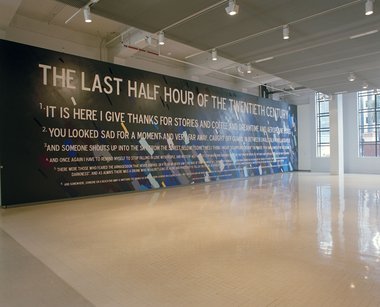
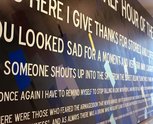
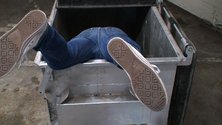
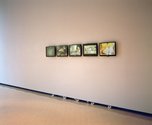
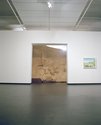
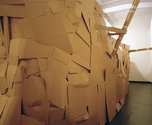

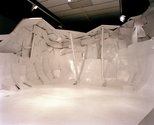
 Two Rooms presents a program of residencies and projects
Two Rooms presents a program of residencies and projects Advertising in this column
Advertising in this column



This Discussion has 0 comments.
Comment
Participate
Register to Participate.
Sign in
Sign in to an existing account.